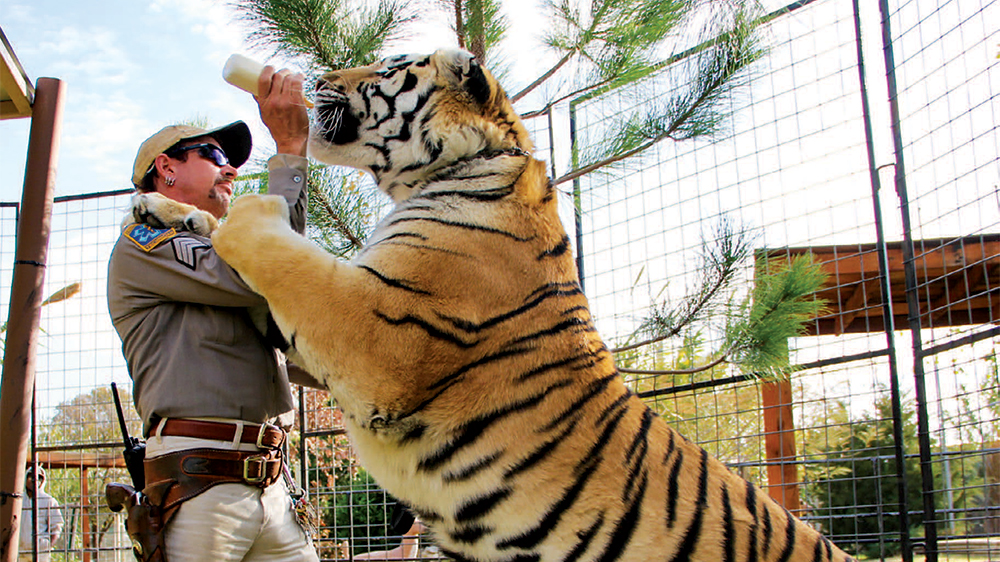How ‘Tiger King’ Editors Wrangled an Ever-Changing Story to Craft Netflix Docu-Series
By Jazz Tangcay
LOS ANGELES (Variety.com) – Seven editors honed footage for Netflix seven-part docu-series “Tiger King: Murder, Mayhem and Madness,” about the man who owns the largest collection of big cats in the U.S. The telling of the story of Joseph Maldonado-Passage, aka Joe Exotic, is a meta one, including a reality show-within-a-show, and it turns sinister very quickly. After all, there’s an attempted murder plot to sort out.
The first 10 minutes reveal how Exotic winds up in jail, an editing choice made at the behest of Netflix. “Without the promise of things getting bonkers, you don’t know if people will stay tuned,” says editor Doug Abel, the first to come on board the series, in 2017. At that time, he says, the production had a broader concept. “It was about animal trafficking,” he explains.
As director Eric Goode reveals in the series’ opening moments, the instant he’s shown a snow leopard in a cage — an animal owned by Exotic — is when the original idea got a face and became the basis for “Tiger King.”
“We go from [‘Joe Exotic TV’ producer] Rick Kirkham’s on-camera intro to the snow leopard, and when you see that moment when the doors open, your curiosity is piqued,” says editor Nicholas Biagetti, who came on later in the process and had to play catch-up in a tale not only of attempted murder but also about the battle to control the exotic animal market in Florida. “This isn’t just about Joe’s story. Everyone has their own story, and you’re trying to stay as informed as possible.”
Editors Pedro Alvarez Gale, Dylan Hansen-Fliedner, Camilla Hayman, Daniel Koehler and Geoffrey Richman, as well as Abel and Biagetti, worked on the project, which features at its heart a feud between Exotic and Carole Baskin, founder of Big Cat Rescue. But there are many other players involved, and much of the making of the series was happening as interviews from various subjects kept yanking the story in different directions.
As Goode was filming, he relied on feedback from his editors before he shot his next interview, since he hadn’t always had the chance to see the latest cut, Biagetti says. With new footage constantly coming in, the editors had to be flexible. Abel says the editing process was “like we were building a plane while flying it.”
Google documents, team meetings and Slack conversations proved useful tools for the editors in mapping the story and wrapping their heads around the numerous interview subjects and countless twists that came with them. “We didn’t have to go out of our way to make anything outrageous,” Abel notes. Exotic, as we learn, is serving a 22-year jail sentence for the attempted murder of Baskin. (Bia-getti came onto the project after Exotic had been arrested.)
Biagetti worked on cutting Episodes 3, 6 and 7, but it was “a truly collaborative effort,” he says. The freedom to determine the direction of each installment helped him immensely. When he got to editing Episode 3, he was able to dive into the story of Don Lewis, Baskin’s late husband, who had disappeared under mysterious circumstances some 20 years earlier. “It’s this whole new cast of interviews in Tampa and dates back to a different time in the big cat industry,” he explains. That’s the point at which the series takes another twist, and where a different true-crime aspect enters. “That was fun and freeing to play with,” Biagetti says.
While the editors didn’t know exactly what they were facing at the start of the series, they might have an inkling if there’s a Season 2: With Exotic in jail, he’s threatening to sue, citing a conspiracy.

